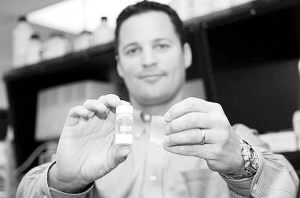 New Reverse Osmosis Membrane and Nanocomposites One in eight people around the world now don't have access to a safe source of water. The United Nations predicts that by 2025, more than one third of the world’s population will face severe water shortages. Industrial development coupled with the pressure of climate change and population growth has made the issue of water resources even more pressing for developing countries.
New Reverse Osmosis Membrane and Nanocomposites One in eight people around the world now don't have access to a safe source of water. The United Nations predicts that by 2025, more than one third of the world’s population will face severe water shortages. Industrial development coupled with the pressure of climate change and population growth has made the issue of water resources even more pressing for developing countries. Daily drinking tap water has undergone a variety of cleaning, sterilization methods, after the factory water quality testing can meet the national health standards, and then through the long pipeline and the second pressurized water tank, into millions of households. Before entering the household, the long pipeline passed through complex terrain and roads. Some of the pipelines were in disrepair. Some of the pipelines crossed the sewers. Some of the water pipes in the building had to pass through the toilet before they could reach the kitchen. Because the leakage around the water pipe and the second pressurized water tank are rarely cleaned and disinfected, the water tank can not be spotless, and the rust in the water pipe will cause secondary pollution to the water quality. Once again, rust, lead, phenol, etc. Pathogenic microorganisms and pesticides have appeared to varying degrees and their pollution may be alarming. Long-term drinking may cause lithogenesis, cardiovascular disease, and arteriosclerosis. People have always believed that as long as it is safe to boil water for drinking, in fact, boiling water does not cause diarrhoea. The boiling water process does not remove impurities that cause chronic diseases in the water. It can be said that our long-term drinking water is not very hygienic.
The use of nanotechnology for water treatment is a high technology that has emerged in recent decades. The use of nanotechnology to treat raw water can result in the purification of purified water. The use of nanotechnology to treat sewage can be used as a standard recyclable water. Compared with traditional water treatment methods, nanometer water purification treatment occupies a small area with low manpower and energy consumption, which makes it possible to become an important way to help developing countries and the world to ease the already-arrived water crisis.
Nanotechnology can be used for raw water treatment, deep purification of tap water, sewage treatment, and production of recycled water. Compared with traditional water treatment methods, the nano-water treatment process occupies a small area, consumes less manpower and energy, and has advantages that can not be compared with conventional methods. Studies have shown that nano-TiO2 can handle a variety of toxic compounds, so far, it has been found that more than 3,000 kinds of refractory organic compounds can be quickly degraded by nano-TiO2 under ultraviolet irradiation, especially when the concentration of organic pollutants in water is high or When other methods are difficult to degrade, this technique has obvious advantages.
As we all know, China has a shortage of water resources and water pollution, and the cost of disposal has been rising year by year. In terms of water treatment, nanotechnology is superior to conventional methods and does not produce secondary pollution. Such an efficient, environmentally-friendly technology has long been used in a large number of water treatment practices internationally. However, the application of nanotechnology in water treatment in China is still in its infancy. Deep water purification in the true sense is only a dream for us. Under the background that environmental pollution issues are increasingly being taken seriously by governments of all countries, the use of nanotechnology for water treatment has become a hot spot for high-tech competition in various countries. In many developed countries such as France, the United States, and Japan, the nano-water control technology has been widely promoted in the water supply industry. In contrast, it has not yet been widely used in China.
One of the main reasons that restricts the widespread use of nano-water purification technology in China is that, at present, nano-product safety assessment methods and safety certification systems are still in the process of establishment. Due to the lack of relevant experimental research data, people still lack objective scientific understanding of the risks of nanotechnology and nanomaterials, causing widespread concerns about its application. Therefore, in order to promote the rapid development of China's nanotechnology and related industries, it is also necessary to formulate nationally recognized safety standards, detection technologies, and analysis methods. With a feasible risk aversion mechanism, nanometer water purification technology can be recognized by users in the water purification industry, and its application is gradually expanded.
Fiber Reinforced Plastics,Glass Reinforced Plastic,Reinforced Plastic,Frp Fiber
Hebei Chunfeng International Trade Co., Ltd , https://www.chunfengenergy.com